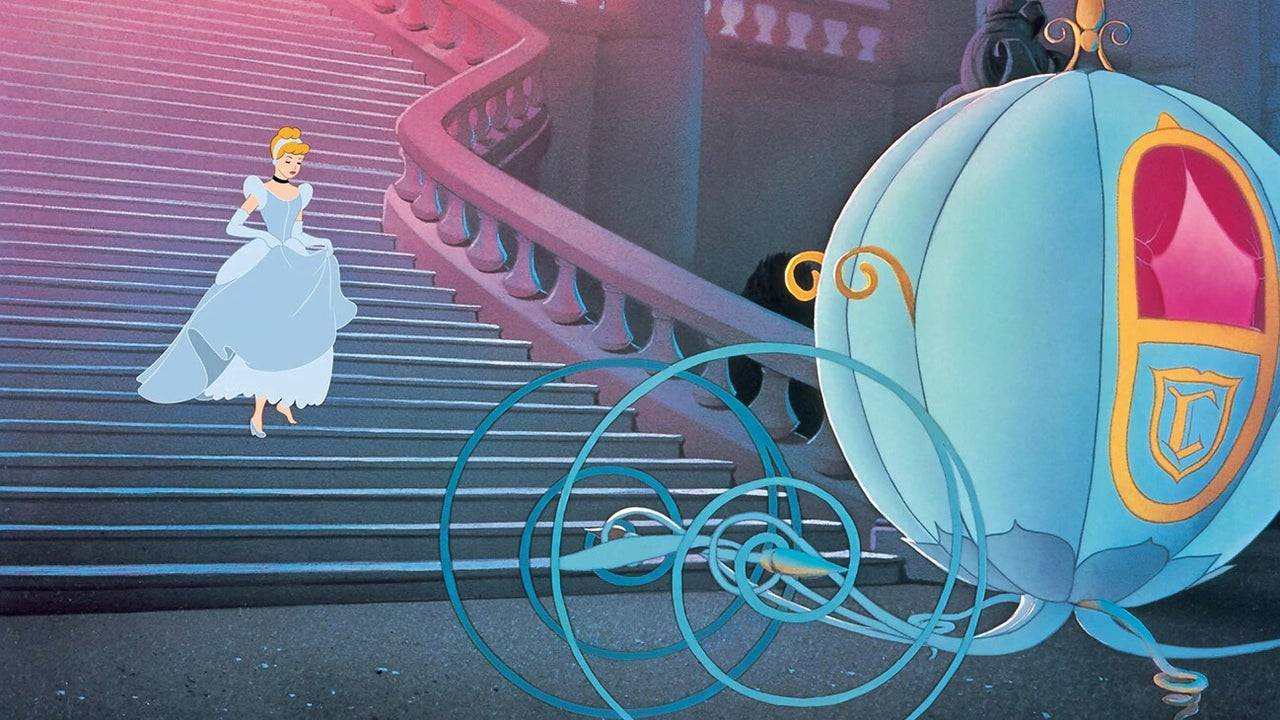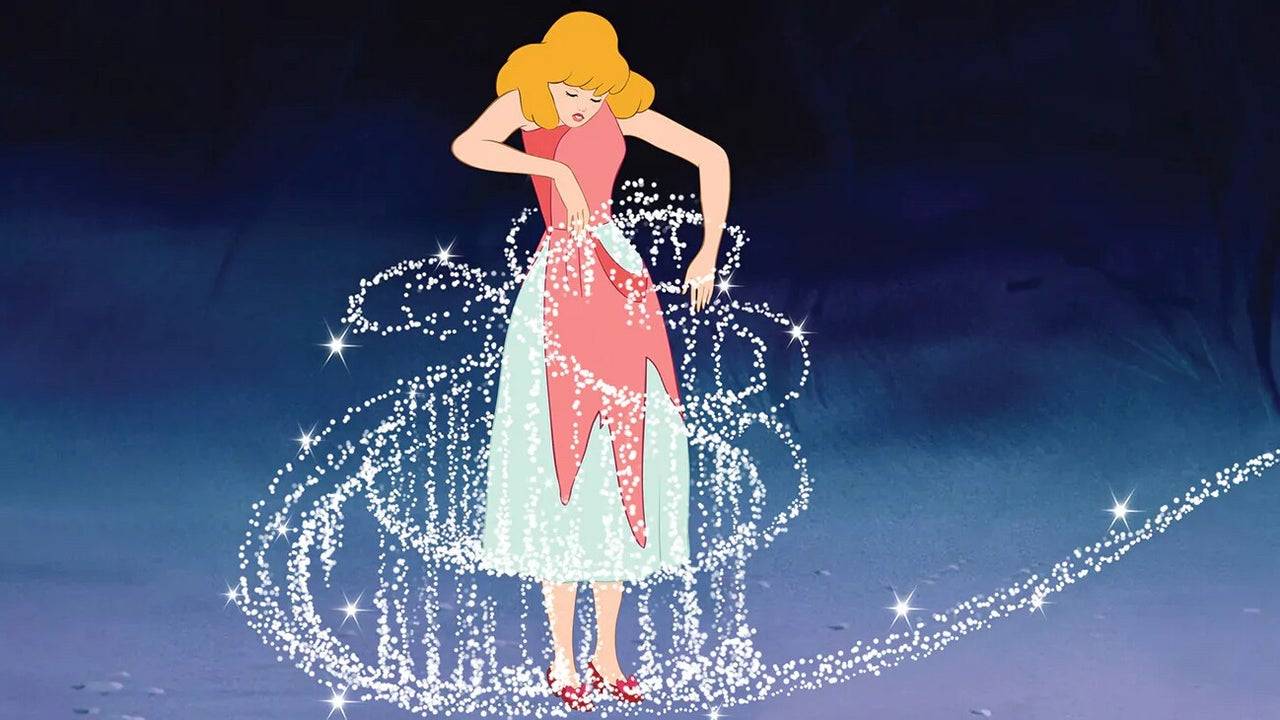Just as Cinderella's dream was set to end at midnight, so too was the fate of The Walt Disney Company in 1947, when it found itself roughly $4 million in debt after the financial flops of Pinocchio, Fantasia, and Bambi, exacerbated by World War II and other factors. However, thanks to this beloved princess and her iconic glass slippers, Disney was saved from a premature end to its animation story.
As Cinderella celebrates its 75th anniversary of its wide release today, March 4, we had the opportunity to speak with several Disney insiders who remain inspired by this timeless tale of rags to riches. This story not only mirrors the journey of Walt Disney himself but also rekindled hope within the company and a world in the process of rebuilding and seeking something to believe in once more.
The Right Film at the Right Time --------------------------------To understand the significance of Cinderella, we must revisit Disney's fairy godmother moment in 1937 with Snow White and the Seven Dwarfs. Its unprecedented success—remaining the highest-grossing film until Gone with the Wind surpassed it two years later—enabled Disney to establish its Burbank studio, still the company's headquarters, and embark on a journey to produce more feature-length animated films.
Disney's next venture, 1940's Pinocchio, carried a hefty $2.6 million budget—about a million more than Snow White—but resulted in a $1 million loss, despite critical acclaim and two Academy Awards for Best Original Score and Best Original Song. This was not an isolated incident, as Fantasia and Bambi also underperformed, adding to the mounting debt. The primary reason was the outbreak of World War II, triggered by Germany's invasion of Poland in September 1939.
“Disney's European markets dried up during the war, and films like Pinocchio and Bambi couldn't be shown there,” Eric Goldberg, co-director of Pocahontas and lead animator on Aladdin’s Genie, explained. “Consequently, Disney was co-opted by the U.S. government to produce training and propaganda films for the Army and Navy. Throughout the 1940s, the studio also produced what they called Package Films, such as Make Mine Music, Fun and Fancy Free, and Melody Time. These were excellent, but lacked a cohesive narrative from start to finish.”

For those unfamiliar, Package Films were compilations of short cartoons bundled into feature films. Disney produced six such films between the releases of 1942’s Bambi and 1950’s Cinderella, including Saludos Amigos and The Three Caballeros, which were part of the U.S.'s Good Neighbor Policy to counter Nazism in South America. While these films covered their costs and Fun and Fancy Free reduced the studio's debt from $4.2 million to $3 million in 1947, they hindered the studio's ability to produce true feature-length animated stories.
“I wanted to return to the feature field,” Walt Disney stated in 1956, as quoted in The Animated Man: A Life of Walt Disney by Michael Barrier. “It required substantial investment and time. Creating a quality animated feature film demands a lot of both. My brother [Disney CEO Roy O. Disney] and I had a heated discussion about it. It was a significant upset for me... We had to decide whether to move forward, revive our business, or liquidate and sell out.”
Facing the possibility of selling his shares and leaving the company, Walt and Roy chose the riskier path, betting everything on the studio’s first major animated feature since 1942’s Bambi. Failure could have spelled the end for Disney's animation studio.
"I think the world needed the idea that we can rise from the ashes and experience something beautiful," said Tori Cranner, Art Collections Manager at Walt Disney Animation Research Library. "While Pinocchio is an incredibly beautiful and amazing movie, it's not a joyful one in the way Cinderella is. Walt recognized that America needed hope and joy post-war, and Cinderella was the perfect story for that moment in time."
Cinderella and Disney’s Rags to Riches Tale
Walt's fascination with Cinderella dates back to 1922, when he created a Cinderella short during his time at Laugh-O-Gram Studios, which he founded just two years before starting Disney with Roy. The short and later feature film were inspired by Charles Perrault’s 1697 version of the tale, which might have originated as early as 7 BC to AD 23 by the Greek geographer Strabo. It was a classic narrative of good versus evil, true love, and the realization of dreams, which deeply resonated with Walt.

“Snow White was a kind and simple little girl who believed in wishing and waiting for her Prince Charming,” Walt Disney remarked, as seen in footage from Disney’s Cinderella: The Making of a Masterpiece special DVD feature. “Cinderella, on the other hand, was more practical. She believed in dreams but also took action to make them happen. When Prince Charming didn’t come along, she went to the palace to find him.”
Cinderella embodied resilience, standing firm against the mistreatment by her Evil Stepmother and Stepsisters following her parents' death. While Walt's personal life differed from Cinderella's, his story was also one of humble beginnings, filled with failures and challenges, yet driven by an unstoppable dream and relentless work ethic.
This story remained with Walt through the early days of Disney, leading him to attempt a revival in 1933 as a Silly Symphony short. However, the project's scope grew, and by 1938, the decision was made to transform it into a feature film. It took over a decade to reach the screen due to the war and other factors, but this time allowed the film to evolve into the cherished classic we know today.
Cinderella's success can be attributed to Disney's ability to enhance beloved stories with universal appeal. “Disney excelled at taking these age-old fairytales and infusing them with his unique touch,” Goldberg said. “He added his taste, entertainment sense, heart, and passion, making the characters and stories more relatable and enjoyable for all audiences. These tales, originally grim and cautionary, were modernized by Disney, allowing them to endure through time.”
Disney achieved this with Cinderella through the inclusion of her animal friends—Jaq, Gus, and the birds—who provided comic relief and allowed Cinderella to express her true feelings, enriching her character. The Fairy Godmother, redesigned as a bumbling grandmotherly figure by animator Milt Kahl, became more relatable and led to one of the most iconic scenes in movie history.
The transformation scene, where Cinderella's belief in herself and her dreams manifests into a night that changes her life, captivates audiences. The animation of her dress transformation, credited as Walt’s favorite, was meticulously crafted by Disney Legends Marc Davis and George Rowley.
Thanks so much for all your questions about Cinderella! Before we sign off, enjoy this pencil test footage of original animation drawings of the transformation scene, animated by Marc Davis and George Rowley. Thanks for joining us! #AskDisneyAnimation pic.twitter.com/2LquCBHX6F
— Disney Animation (@DisneyAnimation) February 15, 2020
“Each sparkle was hand-drawn on every frame and then hand-painted, which is astounding,” Cranner said with enthusiasm. “There’s a subtle moment during the transformation where the magic pauses for a fraction of a second before her dress changes. That brief pause is what makes the scene so enchanting—it's like holding your breath before the magic unfolds.”
Another unique Disney addition is the breaking of one glass slipper at the film's end, a detail not found in earlier versions, which adds depth to Cinderella's character and underscores her role as the protagonist of her own story.
“Cinderella is not a passive character; she has a strong personality,” Goldberg noted. “When the stepmother breaks the glass slipper, Cinderella reveals the other one she’s been holding onto, demonstrating her strength and control over her destiny.”
Cinderella's tale of self-advocacy and resilience struck a chord with audiences worldwide, giving Disney the success it desperately needed. Premiering in Boston on February 15, 1950, and widely released on March 4, the film grossed $7 million on a $2.2 million budget, becoming the sixth-highest grossing film of 1950 and earning three Academy Award nominations.
“When Cinderella was released, critics hailed it as a return to form for Walt Disney,” Goldberg recalled. “It was a huge success, re-establishing Disney's narrative feature films like Snow White. The studio regained its momentum, leading to the development of classics like Peter Pan, Lady and the Tramp, Sleeping Beauty, 101 Dalmatians, and The Jungle Book, all thanks to Cinderella.”
75 Years Later, Cinderella’s Magic Lives On
Seventy-five years later, Cinderella's influence continues to grow within Disney and beyond. Her castle stands as a symbol on Main Street, U.S.A. at Walt Disney World and Tokyo Disneyland, and her story inspires the iconic castle featured in Disney movie intros.
Her legacy is also evident in modern Disney films, such as a scene that might be one of the most watched of all time. “When we animated Elsa’s dress transformation in Frozen, co-director Jennifer Lee wanted it to echo Cinderella’s,” said Becky Bresee, lead animator on Frozen 2 and Wish. “You can see Cinderella’s influence in the sparkles and effects surrounding Elsa’s dress, honoring the impact of Cinderella and other foundational films.”

There are countless other contributors to Cinderella's success, including the famous Nine Old Men who brought life to the characters and Mary Blair, whose stunning artwork defined the film's unique style. To conclude this retrospective, Eric Goldberg encapsulates why Cinderella was the right film and princess at the right time, saving Disney when it needed it most.
“The essence of Cinderella is hope,” Goldberg concluded. “It instills the belief that perseverance and strength can lead to a better future. Its message is timeless: hope can be realized, and dreams can come true, regardless of the era.”






